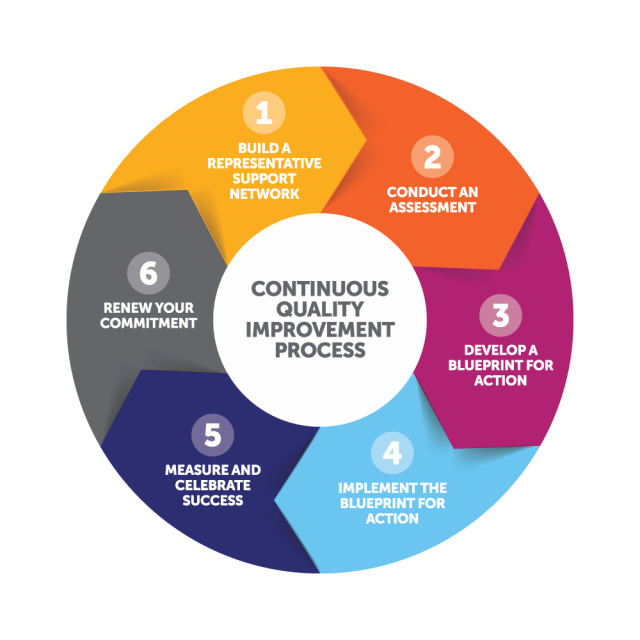About the Process
Framework
Reproductive Well-Being centers on four main Areas of Action to help build a culture and systems of support in a local community.
- Health Equity refers to building a culture of health in a community for all of its members, where everyone has the opportunity to live their best life.
- Policy refers to the laws, regulations, and protocols in a community.
- Education & Communication refers to the efforts within a community to share information and knowledge.
- Healthcare/Service Delivery refers to medical care, social services, and public health programs in a community.
Implementation Through Quality Improvement
In addition to the specific Areas of Action articulated in the framework, Power To Decide will work with teams to implement a continuous quality improvement process. This six-step process will help to build support and capacity, create long-lasting programs, policies, and practices—sending consistent messages throughout the community—and use an evidence-based planning model that works.
1. Build a Representative Support Network
Assembling a multisectoral team is a key first step in addressing needs, action planning, implementation, and sustainability. This team will work together throughout the process.
2. Conduct an Assessment
A needs assessment will take inventory of the current policies and efforts in your “place” to address reproductive well-being and will help the team identify where there are strengths and where there are opportunities for improvement.
3. Develop a Blueprint for Action (Action Plan)
Using the results from the assessment, the team will prioritize best practices it wishes to address, including a mix of those that are fast and relatively easy to implement as well as those that may take more time and energy. Each team will identify best practices from each of the four domains to add to their annual action plan, the Blueprint for Action (Action Plan).
4. Implement the Blueprint for Action (Action Plan)
Once a best practice has been added to the Blueprint for Action (Action Plan), the next step is to identify which resources are available to help your team achieve it and to develop a tactical approach to making it happen. Ongoing customized capacity building assistance (CBA) will be provided to your team via a coach to help support these efforts. The team is also responsible for ensuring the Blueprint for Action (Action Plan) is implemented effectively. Implementation includes determining the specific tasks needed to meet each best practice and who is responsible and developing a timeline. The team will meet periodically to check on progress.
5. Measure and Celebrate Success
The team should annually update the online tool to log when a best practice has been achieved to track progress made on the initiative’s goals. It is also important to reflect on lessons learned, so that changes for future implementation can be identified and continue to make progress. And if your team achieved its goals in the Blueprint for Action (Action Plan), that should be celebrated!
6. Renew your Commitment
Sustainable systems change takes time. Your team drives this process in your “place” and needs to harness the positive momentum to advance its efforts even further year after year. Thus, we encourage you to renew your commitment to this initiative by completing steps 1-5 every year.
